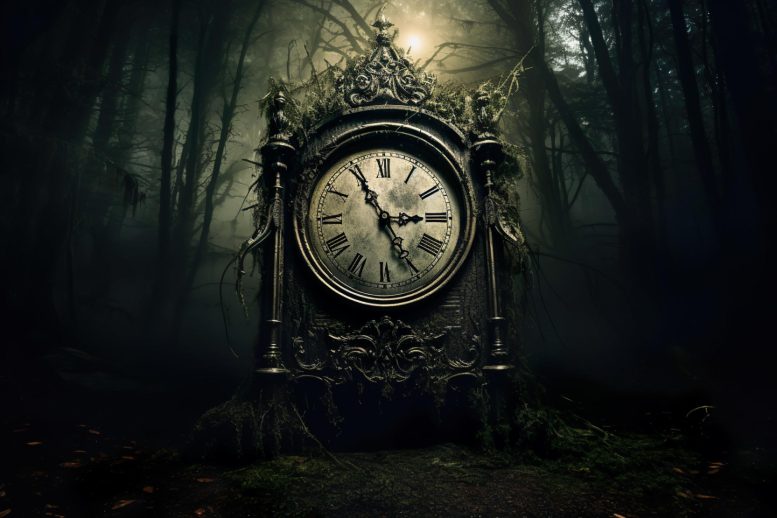
Suicidal thoughts are found to peak in December, especially between 4-5 am, leading to an increase in suicide behaviors in the following spring/early summer, according to a six-year study involving over 10,000 participants.
New research has identified the month during which individuals experience the most intense suicidal thoughts, and that these occur several months prior to the surge of suicide behaviors witnessed in spring and early summer. The research also indicated that the highest frequency of suicidal thoughts arises between 4 and 5 am daily.
Contrary to the common belief that the winter season would have the highest suicide rates, it’s actually the spring and early summer when these behaviors reach their peak. This discovery has puzzled scientists ever since it was initially identified.
Research from the University of Nottingham’s School of Psychology, led in collaboration with the University of Amsterdam and Harvard University, has study has examined the seasonal paths of suicidal thoughts and identified when suicidal thoughts peak during the year and also what time of day these thoughts are the worst. The findings have been published in Nature Translational Psychiatry.
Over a period of six years, responses were collected from over 10,000 people in the UK, US, and Canada who completed questionnaires and tasks about their moods and thoughts, and ideations around suicide and self-harm using the Project Implicit Health Database (PIH).
The researchers, Brian O’Shea and René Freichel, show that suicidal thoughts are, in fact, highest in winter (December), and they developed a conceptual model for why suicidal behavior takes a few months to reach a ‘tipping point’. They also found that the hours of 4 am-6 am are when people are likely the most vulnerable to taking their own lives. Additionally, they found a general increase in negative self-harm cognitions across the six-year period of the study.
Dr Brian O’Shea from the University of Nottingham led the study and explains: “It is well documented that winter is the time when people with mental health problems may struggle with worsening mood and depression, indeed Seasonal Affective Disorder is a recognized issue related to the change in season that affects many people’s mental health. So, it may come as a surprise that spring, a time when you would assume people’s mood lifts, is actually the time of year when people are most at risk of taking their own lives. The reasons for this are complex, but our research shows that suicidal thoughts and mood are the worst in December and the best in June. Between these two points, there is a heightened risk of suicidal behavior, and we feel this is occurring because the gradual improvements in their mood and energy may enable them to plan and engage in a suicide attempt. The relative comparison between the self and others’ mood improving at a perceived greater rate are complementary possibilities that need further testing.”
Online tasks were created to examine the temporal dynamics of explicit and implicit self-harm cognitions, with explicit cognition examined via direct questions about mood, suicide, and self-harm using a standard 1-5 scale. Implicit cognition was explored with a reaction time task where people were required to sort words relating to the self in real-time with death and life words.
The respondents in the sample were from three groups: (1) past suicide attempters; (2) suicide ideation and/or non-suicidal self-injury; (3) no previous self-harm, suicidal thoughts, or behaviors). The researchers found a general increase of negative self-harm cognitions across the six years and seasonality effects for mood and desire to die, particularly among those who previously made a suicide attempt.
The findings show a latency between the peak of explicit and implicit suicide cognition in winter and the peak in suicide attempts and suicide deaths in spring. Explicit suicide cognition which peaks in December preceded implicit self-harm associations, which peaks in February. Both these peaks precede the peak of suicide behavior in spring/early summer. Similar lagged effects were observed in a 24-hour period, with explicit suicidal cognition and mood peaking at 4-5 am and implicit cognition lagging this peak.
Dr. O’Shea adds: “This study is the first to look at temporal trends around mood and self-harm thoughts on such a large scale and really pinpoints times when intervention could be most beneficial.”
Reference: “Suicidality and mood: the impact of trends, seasons, day of the week, and time of day on explicit and implicit cognitions among an online community sample” by René Freichel, and Brian A. O’Shea, 12 May 2023, Translational Psychiatry.
DOI: 10.1038/s41398-023-02434-1









Be the first to comment on "Timing Tragedy: Researchers Unveil When Suicidal Thoughts Peak"